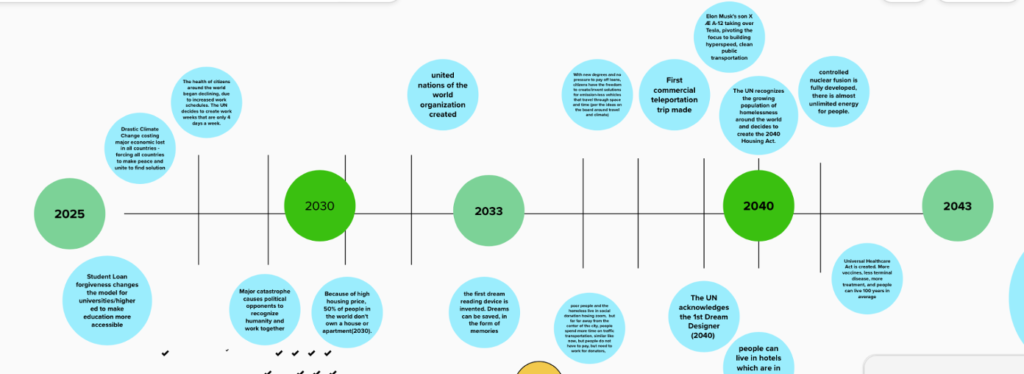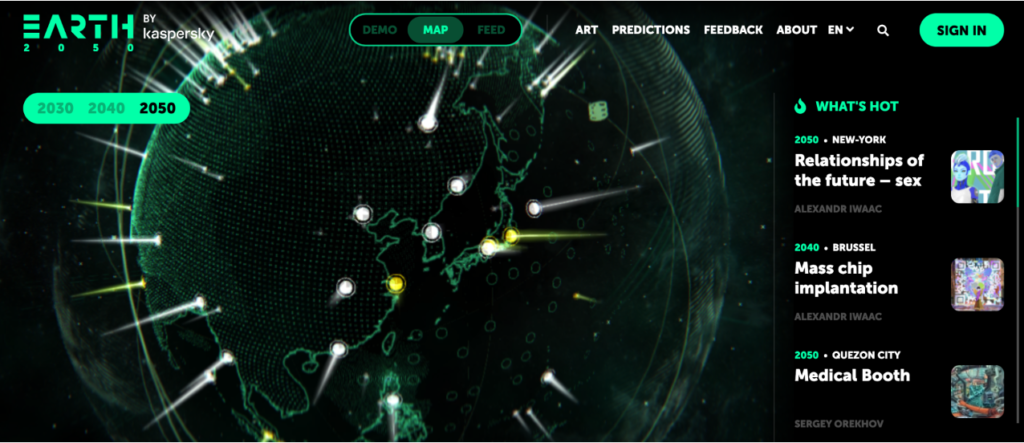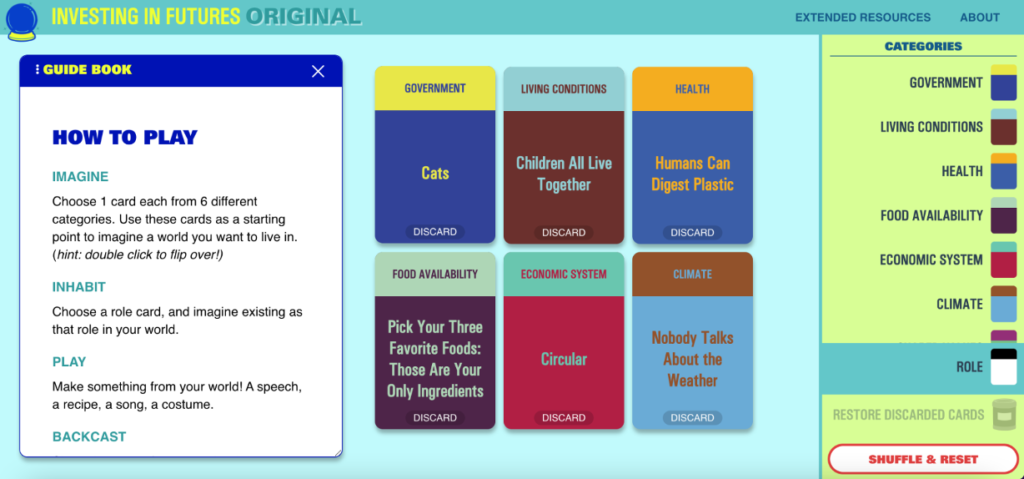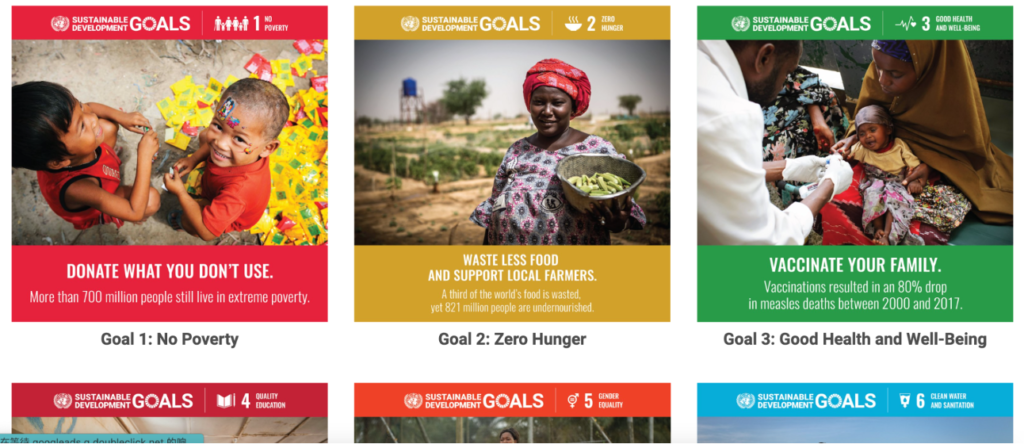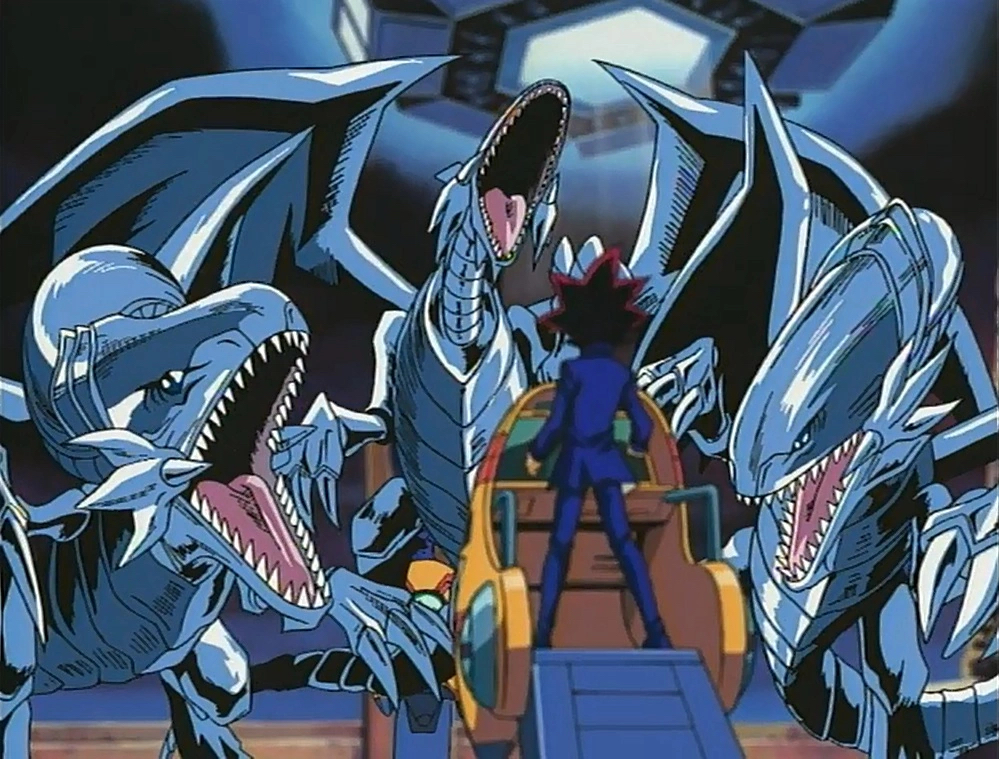In the first peer meeting with Sarah, we first reviewed what we talked about our thought during the first lesson. Thanks to Sarah’s note I was able to recall my thought a week ago. I shared a bit about my 1 on 1 meeting with the professor, which was great and inspiring.
Then we had an exercise about using a sentence to describe the question I wanted to answer in my thesis. And this is the question I had in mind at that time:
- What will the world be like in the future (daily life, social structure, etc), if certain technologies have been developed. (AI, brain technology, supercomputer, etc.)
The next step was to add detailed explanations about this question. And here are some of the details I thought about my question:
- In 50 years (2073)
- People communicate through brainwave
- People get together in metaverse
This exercise was very helpful for me since I had a very broad topic in mind. And this thought process helped me to narrow down my broad idea to a more specific and manageable question.
 Class Playlist
Class Playlist 